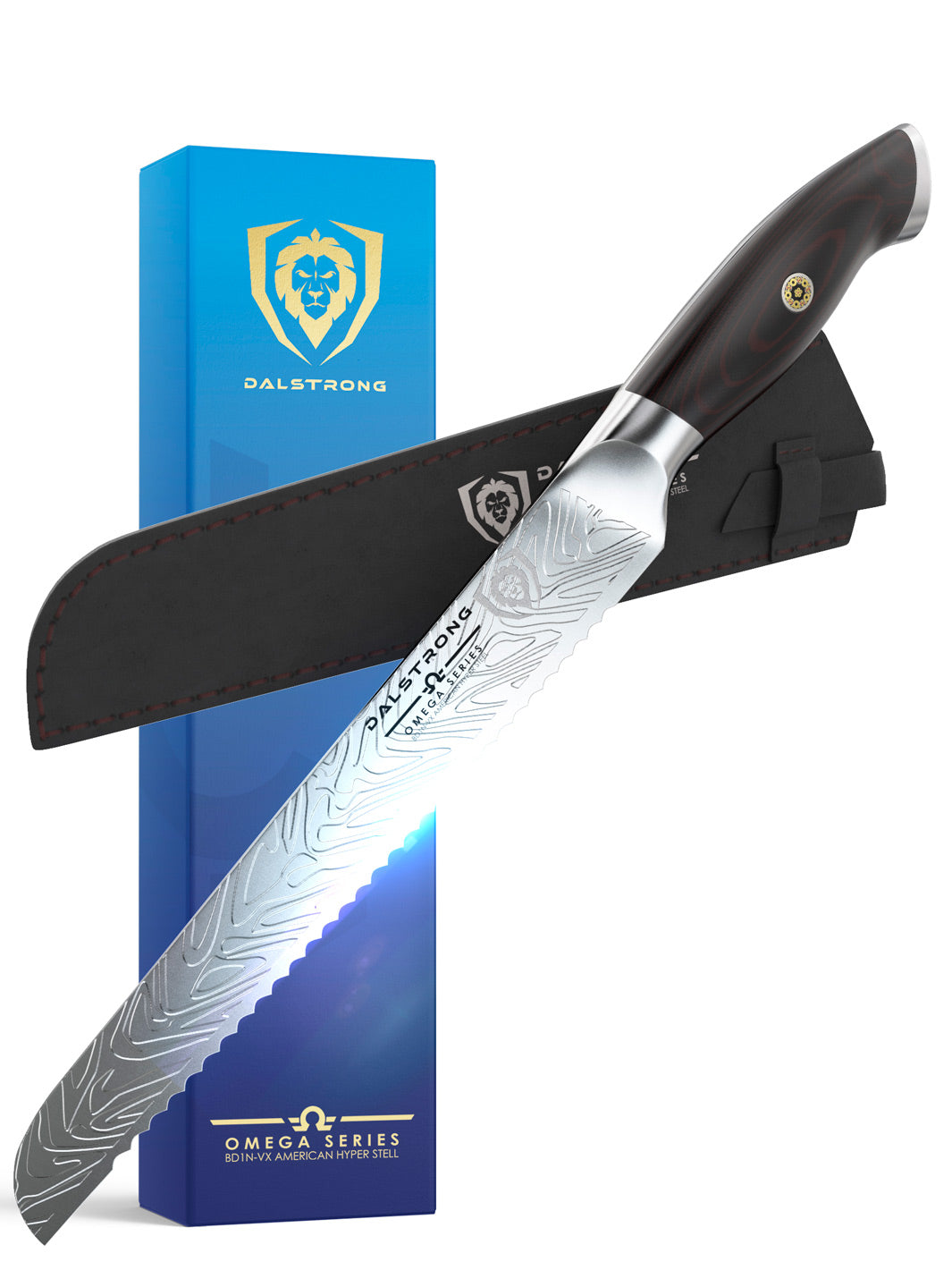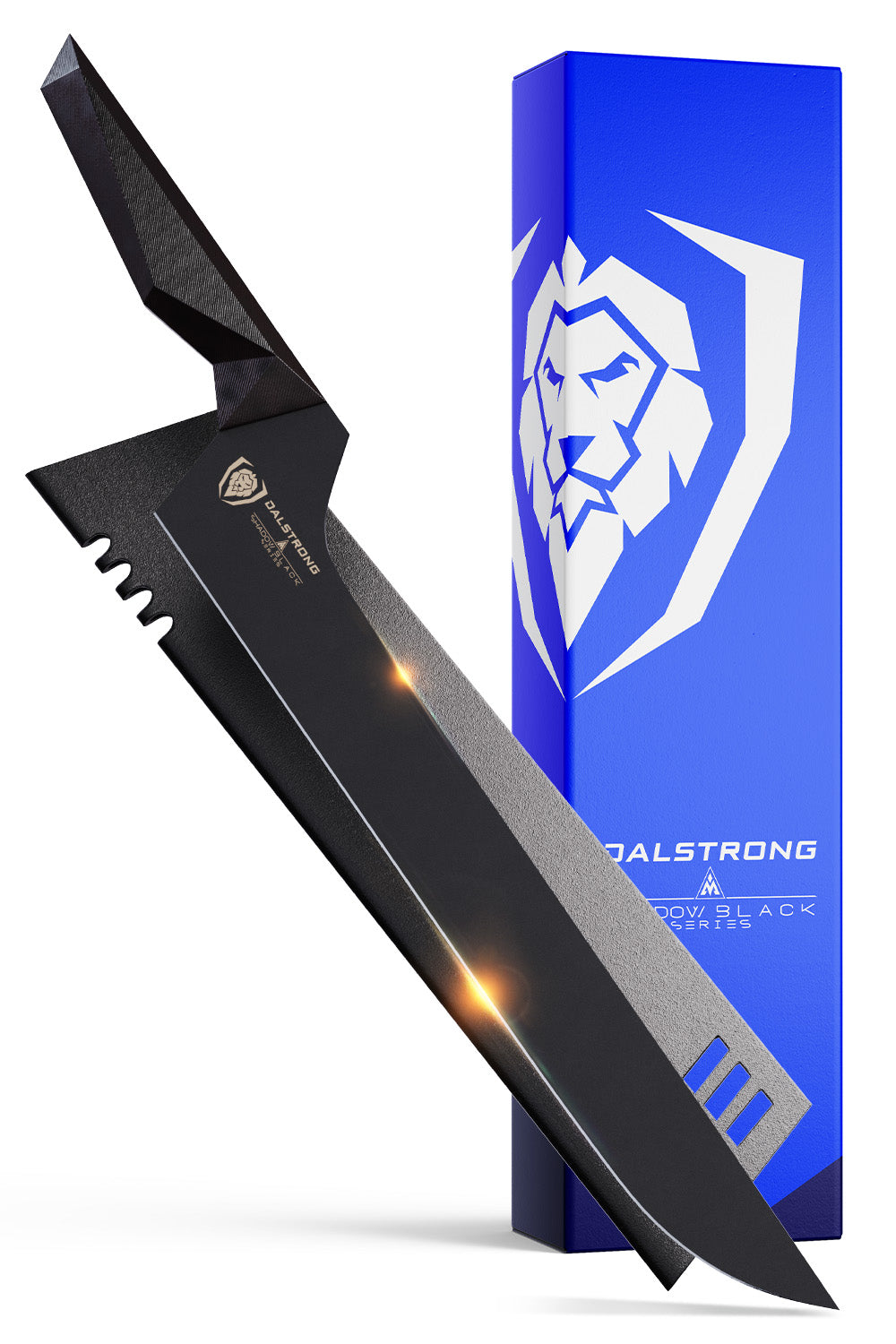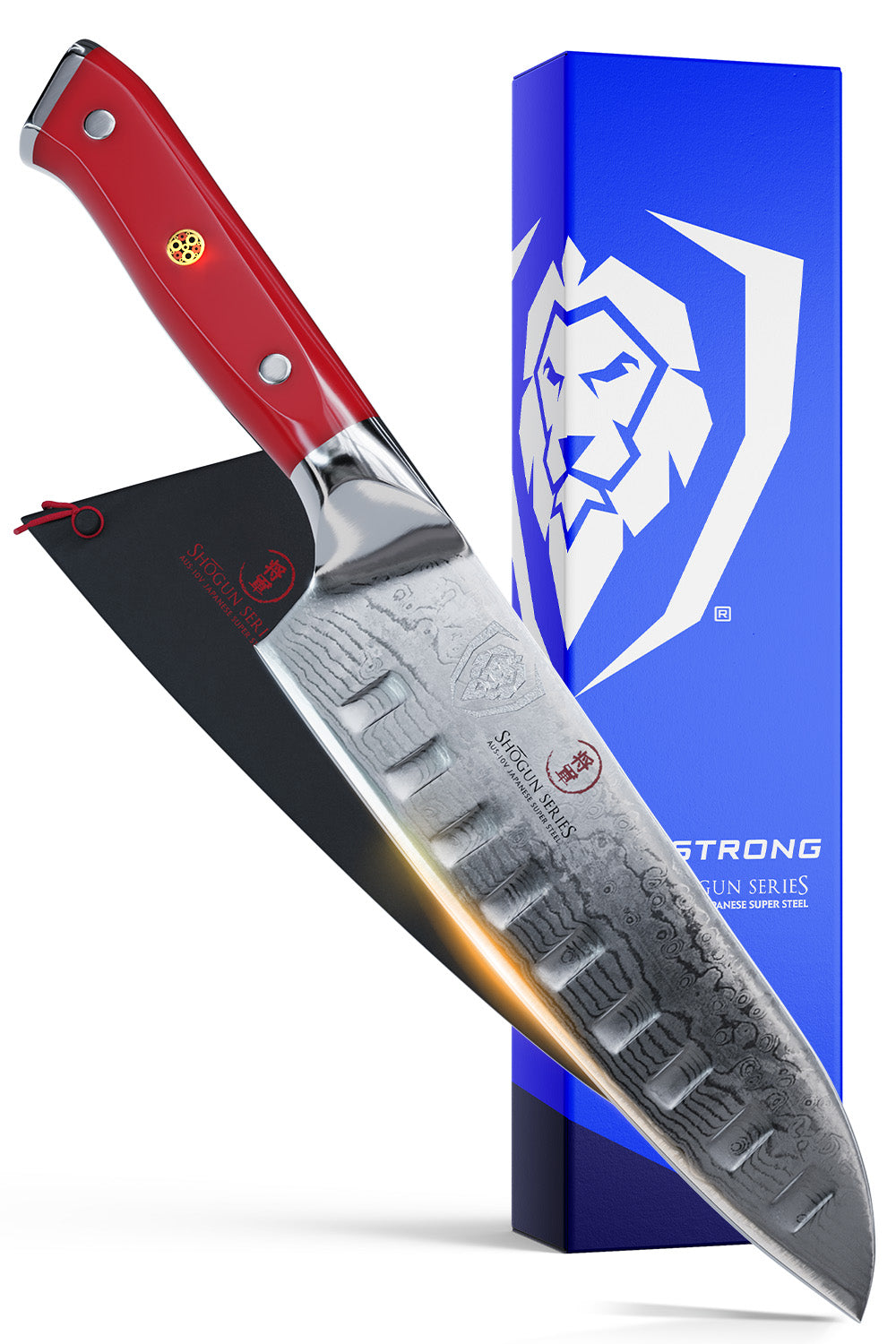 Lionswood Teak Cutting Board Medium Size Dalstrong
Lionswood Teak Cutting Board Medium Size Dalstrong
If you're a home chef looking for a high-quality cutting board that can withstand the demands of everyday use, a teak cutting board might be just what you need. Teak is known for its durability, moisture resistance, and stunning appearance.
In this blog, we’ll be talking about why teak cutting boards have become a popular choice among home cooks and professional chefs.
1. What Is a Teak Cutting Board?
 Corner Cutting Board Natural Teak Wood Dalstrong
Corner Cutting Board Natural Teak Wood Dalstrong
Teak cutting or serving board are a type of cutting board made from the wood of the teak tree, which is native to Southeast Asia. Teak wood boards are known for their durability, strength, and natural resistance to water, making them an excellent choice for cutting boards.
The main benefit of a teak cutting board is its durability. Teak wood boards are naturally resistant to warping, cracking, and splitting, which means that they will last for many years with proper care. This makes it excellent funding for everyone who wants a cutting board that will stand up to heavy use.
Some Benefits of Using Teak Cutting Boards
Another benefit of using teak chopping boards is its natural resistance to water. Teak in itself holds natural oils that repel water, meaning it won't absorb moisture or bacteria that can cause foodborne illness. This makes it a clean, safe, and hygienic choice for cutting raw meat, fruits, and vegetables.
Teak cutting boards are also easy to maintain. Unlike other types of wood, teak wood boards don't require regular oiling or conditioning to maintain their natural beauty and durability. However, it's essential to clean your teak cutting or serving board after each use with soap and water to prevent bacteria from growing on its surface.
In addition to its practical benefits, teak cutting boards are aesthetically pleasing. Teak wood boards have a warm, golden color and a distinctive grain pattern that makes each cutting board unique. This makes it a superb alternative for anyone who wants a cutting or serving board that looks as good as it performs.
A Brief Idea About Shopping For Teak Cutting Boards
When shopping for a teak cutting board, it's essential to pick one that is made from high-quality wood and is properly finished. It's best to choose cutting boards with edge-grain or end-grain wood, which are more durable and resistant to warping than flat-grain wood.
It's also essential to choose a cutting board that has a juice groove, which will catch any juices or liquids from food that is being cut. Teak chopping boards are durable, hygienic, and aesthetically pleasing choices for anyone who wants a cutting board that will stand up to heavy use.
Its natural resistance to water and bacteria makes it a clean and hygienic choice for cutting raw meat, fruits, and vegetables, and its unique grain pattern and warm color make it a beautiful addition to any kitchen. With proper care and maintenance, teak chopping boards can last for many years, making it great funding for any home cook or professional chef.
Need to know more about choosing a cutting board? Keep reading this article, and you’ll see the nitty-gritty of owning chopping boards.
2. What Makes Teak Wood Better Than Other Chopping Board Materials?
Cutting boards are a must, and some would even consider it the underdog! They come in a variety of materials. Every tool has its benefits and drawbacks, and picking the right one depends on personal liking and needs.
Let’s discuss why Teak wood outdoes each chopping board type and is the best board material for home cooks and seasoned chefs.
Here are the most common materials used in cutting boards:
Teak Wood
Wood is a traditional and popular material for serving boards. It's durable, long-lasting, and can be gentle on knives. Hardwoods such as maple, walnut, and cherry are common choices.
- Durability - Teak wood boards are best known for their sturdy and robust design, as well as their longevity, making them an excellent investment for a cutting board that will last for many years. It can withstand heavy daily use and won't show signs of wear and tear quickly.
- Hygiene - Unlike plastic or bamboo, teak wood boards are naturally anti-bacterial and anti-fungal, helping to prevent the growth of harmful bacteria and germs on the surface of the serving board. It is also nonabsorbent, which means it doesn't absorb moisture, making it easier to clean and less prone to bacteria growth than other materials.
- Sustainability - Not only is Teak wood sustainable, but it’s also eco-friendly, too. It's a fast-growing hardwood that's quickly replenished, making it a great alternative to other materials like plastic, which can take centuries and centuries to decompose.
- Aesthetics - Teak wood boards have a beautiful, warm, and natural look that adds to the aesthetics of any kitchen. It's also available in different grain patterns and colors, making it a versatile material that can complement various kitchen decor styles.
Bamboo
Bamboo is an eco-friendly and sustainable alternative to traditional wood boards. It's durable, lightweight, and resistant to scratches and bacteria growth. However, like wood, bamboo can be porous, so it's essential to properly clean and oil bamboo cutting boards to maintain their durability and hygiene.
Bamboo cutting boards are prone to developing scratches and grooves over time, which can provide a breeding ground for pathogens and other organisms if not properly cleaned and maintained.
Some bamboo cutting boards are also made with adhesives or glues that may contain harmful chemicals. If you’re confused between choosing bamboo boards vs. Teak boards, head on to our chef blog to become the master of all things chopping boards.
Plastic
Plastic cutting boards are affordable, lightweight, and easy to clean. They're also non-porous, so they don't absorb bacteria or moisture. However, plastic can be hard on knives, and over time, small grooves can form where bacteria can hide, making it essential to replace them regularly.
Plastic cutting boards are prone to staining and retaining odors from the foods that are cut on them, which can make them difficult to clean and lead to cross-contamination.
Plastic cutting boards are not biodegradable and add to the expanding problem of plastic waste in landfills and oceans, so it is always wiser to choose a sustainable option, like Teak wood boards.
Are plastic boards better than Teak boards? You now know that they’re not even close to wooden cutting boards!
Glass
Glass cutting boards are nonabsorbent and easy to clean. They're also durable and can double as serving platters. However, glass is hard on knives and can dull them quickly. It's also more likely to damage or break than other materials.
Glass is a tough surface, and this can be damaging to the edge of your knives over time. The constant chopping and slicing on a hard glass surface can cause your blades to dull faster than they would on a softer material like wood or plastic.
Composite
Composite cutting boards are made from a mixture of materials, such as resin, wood fibers, or recycled plastic. They're durable, non-porous, and gentle on knives. They also come in a variation of colors and designs.
However, composite cutting boards are harder than wooden boards, and over time, the surface of the board will develop minor cuts and scratches that can nurture bacteria and make it hard to clean. These cuts can also dull your knife faster. They’re also more expensive than other materials and may be less eco-friendly.
There are many tools to pick from when it comes to cutting boards. Each material has its benefits and drawbacks, but Teak wood boards are a promising material with a long list of advantages.
With proper maintenance and cleaning, you can help ensure that your favorite round teak cutting board stays hygienic and lasts for decades.
3. How To Maintain and Care for Your Teak Cutting Boards
 Lionswood Teak Cutting Board Medium Size Dalstrong
Lionswood Teak Cutting Board Medium Size Dalstrong
While Teak wood is a durable and robust carving board, proper maintenance and care are essential to keep them in good condition and increase their longevity.
Tips on how to maintain and care for your teak cutting boards:
Clean your cutting board after each use
Rinse your teak carving board with warm soapy water and use a sponge brush to extract debris or food particles. Avoid using grating chemicals or rubbing cleaners that can damage the wood.
Dry your cutting board thoroughly
After cleaning, dry your teak carving board thoroughly with a clean towel. Avoid leaving it wet or soaking in water, as this can cause your wood chopping board to warp or crack.
Apply cutting board oil regularly
To stop the wood from cracking and drying out, apply a food-grade cutting board oil regularly. You can use mineral oil, beeswax, or specialized oils made for teak wood. Apply the oil generously to the entire top of the board, let it sit for a couple of minutes, then wipe off the remaining oil with a cloth.
Oiling your carving board helps to protect the wood from moisture and bacteria, as well as prevent it from drying out and cracking. Oil also helps to bring out the natural beauty and color of the wood.
It's essential to use a food-grade oil when oiling your cutting board, as other types of oil can become rancid or toxic. Mineral oil is a common choice and is inexpensive and widely available. Beeswax, coconut oil, and specialized oils made for teak wood are also options.
You should oil your carving board regularly to keep it in good condition. How frequently you need to oil it depends on how often you use it, but a good rule of thumb is to oil it every month or so. If the wood looks dry or dull, it may need to be oiled more frequently.
Before oiling your cutting board, make sure it is clean and dry. Apply plenty of oil to the surface of the board using a clean fabric or paper towel. Be sure to oil the sides and edges as well. Apply the oil on the board for a couple of minutes, allowing it to soak into the wood. Then, use a clean fabric to take off any excess oil.
Let your chopping board air dry before using it again.
To make oiling your cutting board easier, you can warm up the oil first by placing the bottle in a bowl of warm water. This will make the oil thinner and easier to apply. You can also apply the oil to the board using a brush or your hands, spreading the oil evenly across and into the wood. If your cutting board is heavily used or exposed to much moisture, you may need to oil it more frequently.
Use a non-abrasive cutting surface
To protect your teak cutting board from scratches and damage, always use a non-abrasive cutting surface such as plastic, silicone, or bamboo. Avoid cutting directly on the board with sharp knives, as this can cause deep grooves and scratches.
Store your cutting board properly
Store your teak cutting board in a dry and cool place away from direct sunlight and heat sources. Avoid stacking heavy items on top of it or storing them in a way that puts pressure on the board, as this can cause warping and cracking.
Sand your cutting board when needed
Over time, your teak cutting board may develop small scratches or imperfections. To remove these, you can use fine-grit sandpaper to lightly sand the surface of the board. You can also sand your chopping board, but just remember to not overdo it as the surface can damage the knife.
By following these tips, you can ensure your teak cutting board stays in excellent condition for many years. Proper maintenance and care will not only help preserve the beauty of the wood but also prevent the growth of bacteria and prolong the lifespan of your cutting board.
Read about the 5 cutting board hacks, here.
4. Best Dalstrong Teak Cutting Boards For You
Let’s talk about the best wooden cutting boards, folks. Once you’re done reading through this, you’ll be able to find your perfect fit.
1. Lionswood Teak Cutting Board Medium Size Dalstrong

This edge Grain Teak Cutting Board is a high-quality and functional choice for any home cook. The durable construction and natural resistance to moisture and bacteria make it a great investment for any kitchen. While it may require regular maintenance, the beauty, and functionality of this cutting board make it well worth the effort.
PROS:
- Teak wood is naturally resistant to moisture and bacteria.
- Edge grain construction means the board is less likely to warp or crack.
- Juice canal helps to keep your countertop clean and free from spills.
- Beautiful and natural wood grain adds style to your kitchen.
CONS:
- Requires regular oiling to maintain its appearance and prevent drying.
- May be heavier than other carving board materials.

This Dalstrong Colossal Teak Cutting Board is a beautiful and functional addition to any kitchen. The end-grain construction and large size make it durable and resistant to gouging, while its steel handles and sleek design make it perfect for presentation. Although it may require regular maintenance, this cutting board is a great investment for those looking for a high-quality and long-lasting cutting surface.
PROS:
- Made from luxury teak wood, naturally resistant to water, bacteria, and staining
- End-grain fabrication ensures a slip-resistant surface that absorbs impact, making it ideal for busy professional kitchens
- Sizeable and hefty, this board doubles as a chopping or butcher blocks
- Comes with steel handles for easy carrying and serving, making it perfect for presentation
CONS:
- This is a heavy-duty cutting board that might not be every home cook’s first choice.
- Requires regular maintenance, including oiling and cleaning for everyday usage.

This large primal Teak cutting board will elevate your culinary craft. Perfect for all your larger chopping, slicing, and serving needs, this board will make meal preparation a breeze while adding a touch of sophistication to your kitchen.
PROS:
- Made of sustainably sourced Tropical Teak wood, known for its durability and natural oils
- The long juice groove helps to keep messy prep on the board and off your counter
- Not only is the tight-wood grain stunning to look at and elegant to use, but it also ensures a long-lasting hygienic cutting surface ideal for busy professional kitchens
CONS:
- Being a natural wood product, this Teak board requires regular oiling and maintenance to maintain its appearance and longevity
- The large size may not be ideal for home cooks with limited counter space.
4. Corner Cutting Board Teak Wood Dalstrong

Crafted from 100% sustainably sourced tropical teak wood, this cutting board is not only beautiful but also incredibly durable. Known for its impressive moisture resistance and natural oils, teak wood is the perfect material for a cutting board that will stand up to the rigors of everyday use. Still, need some more convincing?
PROS:
- Handcrafted with 100% natural Teak wood, making it durable and long-lasting.
- Moisture and bacteria-resistant surface make it hygienic for wet environments such as busy professional kitchens.
- Checkered construction absorbs impact, keeping your Dalstrong knives sharper for longer.
- Low maintenance and beautifies with age.
CONS:
- Should not be submerged in water for long periods of time to prevent potential weakening or warping of the wood.
- Not intended for hot surfaces, so be sure not to place hot utensils on top of it.
5. Teak Cutting Board Medium Size Dalstrong 
This Dalstrong medium primal Teak cutting board is a functional and sleek addition to every kitchen. Easy to use, clean, and store, you'll find yourself reaching for this cutting board time and time again. This cutting board is not just for the kitchen. It's adorned with two Dalstrong Lion Head Pins and laser-etched with the Dalstrong logo, making it a statement piece that is perfect for serving as well as preparing.
PROS:
- Teak wood for this cutting board is sustainably sourced.
- The cutting board can be used as a charcuterie board, too.
- This medium-sized cutting board is ideal for most home kitchens.
CONS:
- May require regular maintenance with food-grade mineral oil to maintain the board's quality and longevity.
- Some folks may prefer a different material type.
5. Frequently Asked Questions
Is teak wood good for cutting boards?
Teak wood is generally considered a great material for cutting boards due to its impressive moisture resistance and durability, as well as the natural oils that make it naturally antibacterial.
Are teak cutting boards good for knives?
Teak cutting boards are also good for knives due to their end-grain construction, which allows the wood fibers to spring back easily and offers a slip-resistant surface that absorbs impact. This means that knives stay sharper longer, and the board is less likely to develop deep gouges that can harbor bacteria.
What is the best wood for cutting boards?
While teak is a great option for cutting boards, there are other woods that are also popular choices. Maple, walnut, and cherry are all excellent options due to their hardness, durability, and low porosity. Bamboo is also a popular choice due to its sustainability and antimicrobial properties.
Is teak or acacia better for cutting board?
When it comes to comparing teak and acacia, both are excellent options for cutting boards. Acacia is slightly harder and more scratch-resistant than teak, but teak has more natural oils, which can make it slightly more resistant to moisture and bacteria. Ultimately, the best choice depends on personal preference and the specific qualities that are most important to you.









